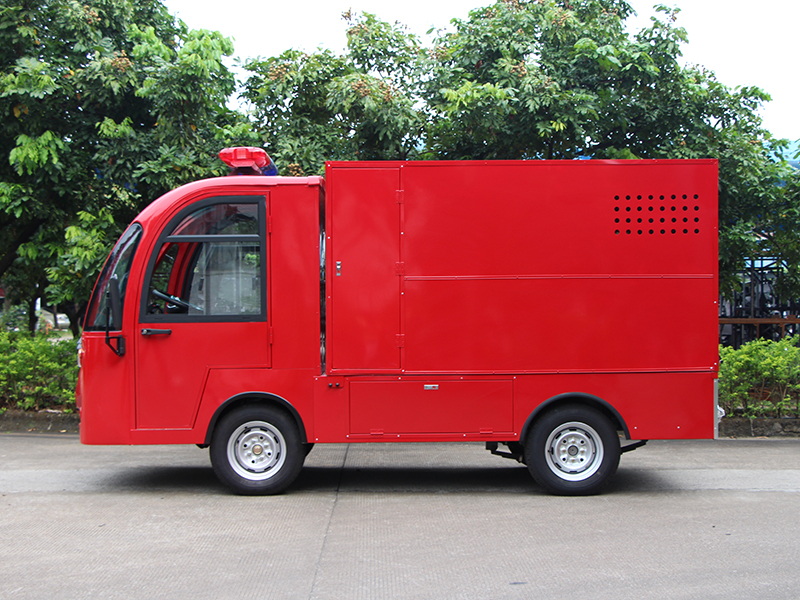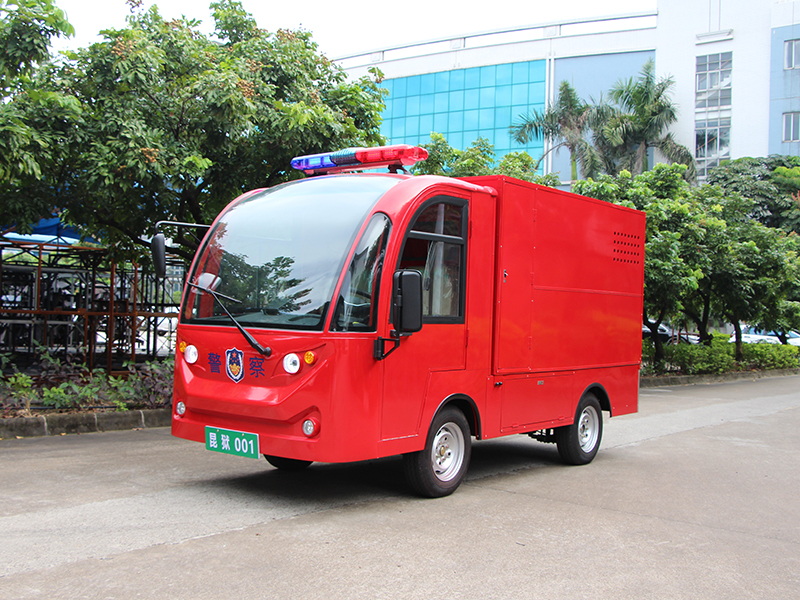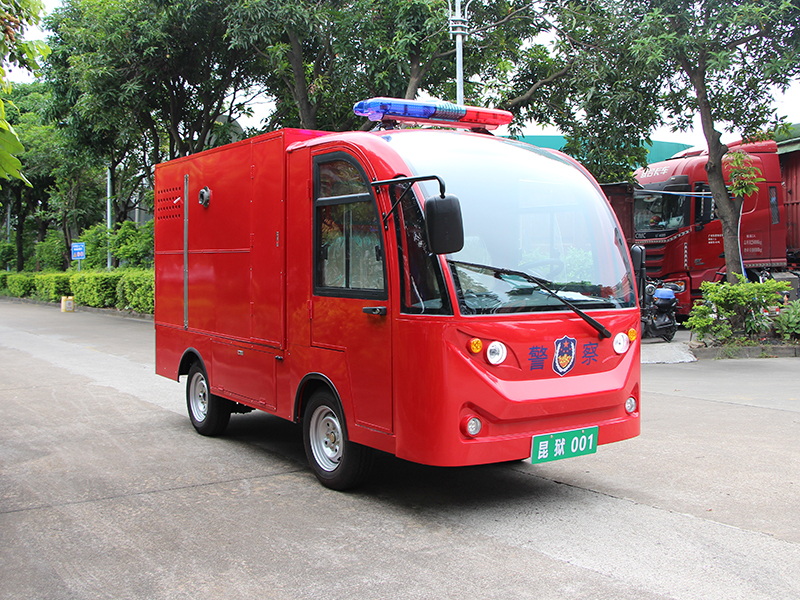Content Menu
● Understanding Ambulance Electric Cars
>> Key Components of an Ambulance Electric Car
>> Design Considerations for Ambulance Electric Cars
● Typical Range of Ambulance Electric Cars on One Charge
>> Real-World Range Examples
>> Factors Affecting Range
>> Impact of Auxiliary Systems on Range
>> Urban vs. Rural Operation
● Charging Times and Infrastructure
>> Charging Options
>> Charging Infrastructure Needs
>> Battery Management and Charging Strategies
● Advantages of Ambulance Electric Cars
● Challenges and Considerations
● Future Trends in Ambulance Electric Cars
>> Battery Technology Improvements
>> Integration with Smart Grids and IoT
>> Autonomous and Connected Ambulances
>> Expansion of Charging Infrastructure
● Conclusion
● FAQ
>> 1. How far can an ambulance electric car typically travel on one charge?
>> 2. How long does it take to charge an electric ambulance?
>> 3. Does the weight of medical equipment affect the ambulance electric car's range?
>> 4. Are electric ambulances more cost-effective than diesel ambulances?
>> 5. Can electric ambulances be used in rural areas with longer distances?
Electric ambulances are rapidly gaining traction as a sustainable and efficient alternative to traditional diesel-powered emergency vehicles. As the world shifts towards greener transportation, understanding the operational range of an ambulance electric car on a single charge is crucial for emergency services planning, infrastructure development, and environmental impact assessment. This article delves into the capabilities, technology, and real-world performance of ambulance electric cars, highlighting how long they can operate on one charge.

Understanding Ambulance Electric Cars
An ambulance electric car is a specially designed emergency medical vehicle powered entirely by electricity, typically using high-capacity lithium-ion batteries. These vehicles integrate advanced electric motors, battery management systems, and medical equipment while maintaining the critical functionality of traditional ambulances.
Key Components of an Ambulance Electric Car
- Electric Motor: Converts electrical energy into mechanical power, providing instant torque and smooth acceleration necessary for emergency response.
- Battery Pack: Stores electrical energy; battery capacity directly influences the vehicle's driving range.
- Control Systems: Optimize energy use and include regenerative braking to recharge the battery during deceleration.
- Medical Equipment Integration: Includes life-support systems, monitors, and communication devices powered alongside the vehicle.
Design Considerations for Ambulance Electric Cars
Unlike standard electric cars, ambulance electric cars must accommodate specialized medical equipment, patient compartments, and communication devices. This means the vehicle's electrical system must be robust enough to power both propulsion and life-saving equipment simultaneously without compromising range or performance. Additionally, these vehicles are often heavier due to reinforced chassis and safety features, which impacts energy consumption and range.
Typical Range of Ambulance Electric Cars on One Charge
Real-World Range Examples
- The WAS 500 E-ambulance manages approximately 200-250 km (124-155 miles) on a single battery charge, even while operating air conditioning, heating, and medical equipment, with a total vehicle weight of 5.5 tons. It features a 112 kWh battery and a powerful 140 kW motor.
- The Lightning ZEV3 Transit van ambulance offers a range between 140 to 200 miles depending on battery capacity (80 kWh or 120 kWh) and usage conditions.
- Flux Mobility's electric ambulance claims a maximum range of up to 480 km (298 miles) based on WLTP (Worldwide Harmonized Light Vehicles Test Procedure) calculations, though real-world range is typically lower due to vehicle load and operational factors.
- A trial by St John in New Zealand reported their EV ambulance completing a typical 12-hour urban shift covering about 180 km (112 miles) with battery remaining for additional shifts. Charging at their facility takes about 2 hours, while fast charging can reduce this to 30-40 minutes.
Factors Affecting Range
- Vehicle weight, especially due to medical equipment and patient load.
- Driving style and speed during emergency responses.
- Use of auxiliary systems such as heating, air conditioning, and onboard medical devices.
- Terrain and urban versus rural driving conditions.
- Battery age and health.
Impact of Auxiliary Systems on Range
Auxiliary systems such as air conditioning, heating, and onboard medical devices draw power from the same battery that propels the ambulance electric car. In extreme weather conditions, heating or cooling can significantly reduce the vehicle's range. For example, in cold climates, battery efficiency drops, and heating systems consume additional energy, sometimes reducing range by up to 30%. Similarly, medical equipment like ventilators and monitors require continuous power, which must be factored into operational planning.
Urban vs. Rural Operation
Urban ambulance electric cars often benefit from frequent stops and regenerative braking, which helps recharge the battery during deceleration. This can extend the effective range during city operations. In contrast, rural ambulances may face longer distances between stops and fewer opportunities for regenerative braking, which can reduce range. Additionally, rural areas often lack fast charging infrastructure, posing challenges for electric ambulance deployment in these regions.

Charging Times and Infrastructure
Charging Options
- AC Charging (Level 2): Typically provides 22 kW power, taking about 5 hours for a full charge on vehicles like the WAS 500 E-ambulance.
- DC Fast Charging: Offers up to 100 kW, reducing full charge time to as little as 1.5 hours or even 30-40 minutes in some cases.
- Interim Charging: Short 20-30 minute charges can extend range by about 30 km (18 miles), useful during breaks or at hospitals.
Charging Infrastructure Needs
- Ambulance stations require dedicated fast chargers for efficient turnaround.
- Urban areas often have better charging networks, while rural areas may face challenges due to limited infrastructure.
- Planning for charging during shifts is essential to avoid range anxiety and ensure continuous operation.
Battery Management and Charging Strategies
Effective battery management systems (BMS) are critical in ambulance electric cars to monitor battery health, optimize charging cycles, and prevent overcharging or deep discharge, which can degrade battery life. Emergency services often implement charging strategies that include scheduled charging during shift changes or downtime to ensure ambulances are ready for deployment at all times.
Some services are exploring mobile charging solutions or battery swapping technologies to minimize downtime. Moreover, integrating renewable energy sources like solar panels at ambulance stations can further reduce operational costs and environmental impact.
Advantages of Ambulance Electric Cars
- Zero Tailpipe Emissions: Significantly reduces local air pollution and carbon footprint, contributing to better public health.
- Lower Operating Costs: Electric ambulances have fewer moving parts, reducing maintenance costs by about half compared to diesel ambulances.
- Quiet Operation: Electric motors produce less noise, improving communication inside the vehicle and reducing noise pollution in urban areas.
- Instant Torque: Provides rapid acceleration necessary for emergency response.
- Energy Efficiency: Regenerative braking recovers energy, improving overall efficiency.
- Improved Driver Comfort: Electric drivetrains provide smoother rides and less vibration, reducing driver fatigue.
Challenges and Considerations
- Limited Range Compared to Diesel: Most electric ambulances have a range between 100-250 miles, which may be insufficient for long rural routes without charging support.
- Battery Lifespan: Lithium-ion batteries degrade over time, potentially reducing range and requiring costly replacements.
- Charging Time: Even fast charging requires downtime, which must be managed operationally.
- Vehicle Weight: Heavy medical equipment impacts battery efficiency and range.
- Initial Purchase Cost: Electric ambulances tend to have higher upfront costs than diesel models, although this is offset by lower operating costs over time.
- Cold Weather Performance: Battery performance and range can be significantly reduced in cold climates, requiring additional heating and insulation measures.
- Infrastructure Gaps: Lack of widespread fast charging stations in certain regions limits operational flexibility.
Future Trends in Ambulance Electric Cars
Battery Technology Improvements
Emerging battery technologies such as solid-state batteries promise higher energy density, faster charging times, and longer lifespans. These advancements could extend the range of ambulance electric cars beyond current limits, making them more practical for diverse emergency scenarios.
Integration with Smart Grids and IoT
Ambulance electric cars are increasingly integrated with smart grid technologies and Internet of Things (IoT) systems. This integration allows for real-time monitoring of battery status, predictive maintenance, and optimized charging schedules, enhancing fleet management efficiency.
Autonomous and Connected Ambulances
Future ambulance electric cars may incorporate autonomous driving features and vehicle-to-everything (V2X) communication, enabling safer, faster, and more efficient emergency responses. Autonomous electric ambulances could navigate traffic optimally, reducing response times and energy consumption.
Expansion of Charging Infrastructure
Governments and private sectors are investing heavily in expanding fast-charging networks, particularly in urban centers and along major highways. This development will support wider adoption of ambulance electric cars and reduce operational constraints related to charging.
Conclusion
Ambulance electric cars currently operate with a range of approximately 100 to 250 miles (160 to 400 km) on a single charge depending on battery size, load, and usage conditions. Advances in battery technology and charging infrastructure continue to improve their operational capabilities. While electric ambulances offer significant environmental and operational benefits, challenges such as limited range, charging times, and battery lifespan remain. With proper planning and infrastructure investment, ambulance electric cars can effectively serve urban and suburban emergency medical services, contributing to a cleaner and quieter future in emergency response.

FAQ
1. How far can an ambulance electric car typically travel on one charge?
Most ambulance electric cars can travel between 100 to 250 miles (160 to 400 km) on a single charge, depending on battery capacity and operational conditions.
2. How long does it take to charge an electric ambulance?
Charging times vary: slow AC charging can take about 5 hours, while DC fast charging can reduce this to 1.5 hours or less, with some fast chargers enabling a 30-40 minute charge for significant range extension.
3. Does the weight of medical equipment affect the ambulance electric car's range?
Yes, the additional weight of medical equipment and patient load reduces the overall range compared to standard electric vehicles.
4. Are electric ambulances more cost-effective than diesel ambulances?
Electric ambulances generally have lower operating and maintenance costs, about half of those for diesel ambulances, due to fewer moving parts and cheaper electricity compared to diesel fuel.
5. Can electric ambulances be used in rural areas with longer distances?
Currently, limited range and charging infrastructure pose challenges for rural deployment. However, with strategic charging stations and backup vehicles, electric ambulances can support rural operations to some extent.










































